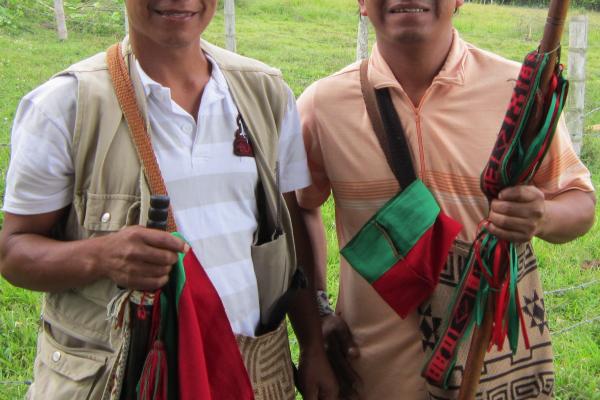The photos from rural Cauca, Colombia are so dramatic they’ve repeatedly made the international news: indigenous Colombian activists--bearing sticks, community spirit, and a whole lot of moxie--demanding that heavily-armed FARC guerrillas and government armed forces alike leave their territory. As the war between the FARC and the government heats up again in Cauca, civilians are — as usual — getting caught in the crossfire; the town of Toribío has been attacked 14 times this year, according to the BBC.
In response, Nasa activists last week shouted FARC guerrillas from their roadblocks back into the jungle, overran a hilltop government military outpost, and booed Colombian President Manuel Santos when he went to Toribío to hold a saber-rattling emergency cabinet meeting. (Yesterday, government forces used tear gas to drive out activists and re-occupy the post).
Last summer, in Cauca with Witness for Peace, I was able to interview two of those activists, members of the Indigenous Guard formed by the Nasa ethnic group. The Indigenous Guard , armed only with beribboned ceremonial staffs of office, has been standing up against armed groups for years--for example, marching into the jungle to successfully demand the release of Toribío’s mayor when the FARC abducted him in 2004. What empowers these activists? Here’s what I learned last year from two Indigenous Guard members, Manuel and German (as translated by Witness for Peace Associate Director Jess Hunter-Bowman)
Read the Full Article

